
"Over the past decade.. California has built 19 prisons and one university. By next year, the state will accommodate 156,000 college students and 242,000 inmates. Prison construction is a big business."
This quotation, from a John Carman article in the June is' edition of the San Francisco Chronicle, poignantly illustrates how serious the problems are with today's criminal justice system. Despite the millions of dollars invested in the incarceration and "rehabilitation" of America's criminals, the prison systems continue to grow at a tremendous pace. It is painfully obvious that whatever the government is doing is not working; jails are more populated than ever before, and the vast majority of inmates are repeat offenders. We have chosen to examine two programs, Homeboy Industries/Jobs For a Future and The Delancey Street Foundation, that are working. We will look at how these programs and their inspirational leaders focus on intervention, education and employment, and in doing so provide ex-cons and ex-gang members with the confidence and resources they need to become productive members of society.
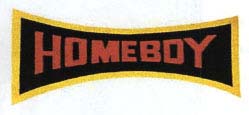
A perfect place to start our discussion on programs specializing in getting gang members and ex-convicts back on the right path is in East Los Angeles and more specifically, the neighborhood of Pico Gardens and Aliso Village. These two housing complexes combined form the largest public housing area west of the Mississippi. And within this area over 60 gangs with 10,000 members create a "wasteland in terms of jobs and opportunity for the young people unlucky enough to be trapped there" (La Ganga). This fact has led to this one tiny corner of the world earning an unwanted nickname - "The Gang Capital of the World." The problems this incredibly poor neighborhood faces every second of the day represent the four problems that the urban policies of Washington aim to solve: crime, education, housing and welfare. Unfortunately, these policies are failing dramatically. Within this neighborhood, as well as slums and ghettos across the country, one encounters rising crime, beleaguered schools, woefully inadequate, low-income housing and ineffective welfare programs. All of these negatives start to pile up so high that it is almost impossible for people living in these areas to break free from the bonds of poverty. Gangs thrive amidst this poverty and these broken households. Adolescent boys with few prospects still want to be accepted and to belong to something. They find both in gangs. There is one man, however, who is helping the citizens of Pico/Aliso to end this cyclical downslide - Father Greg Boyle.
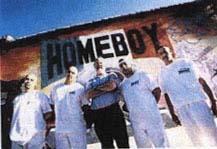
Father Greg Boyle, or "G-Dog," his hip nickname given to him by the Latinos who he has befriended, is a Jesuit priest who was appointed pastor of the Dolores Mission Catholic Church in 1986, after serving in Bolivia. He immediately saw the incomprehensible and depressing situation that lie in front of him, as Dolores is Los Angeles' poorest parish in the archdiocese. But unlike the hundreds of city officials who see this same situation on a daily basis, Father Boyle refused to ignore it. He tackled this problem head on and put as much energy and effort into it as one man possibly could. His endeavors eventually earned him the hate and mistrust of the cardinal of L.A.'s Jesuit prelate, the city's police force, who considered his work to be "aiding the enemy," and many other politicians and prominent city figures. It earned him the trust and love of the hardcore gang members and Latinos within Pico/Aliso. Finally, and most importantly, his effort made a difference. So how could one man, working with no money and virtually no one on his side, make more of a difference than all of the politicians and laws passed aimed at correcting this problem? The answer lies in the way he actually saw the problem.
The American public finds it extremely easy to brush aside the nation's problems and feign ignorance and irresponsibility when the issues arise. People are quick to say "That's not my problem" or "It's the fault of the parents" or any one of a handful of caged excuses. The newspapers and magazines play the same game, as they try to paint the perpetrators of these awful crimes as animals and monsters. Perfect evidence of this was Time Magazine's cover the week following the Columbine High School massacre. In big, bold letters, the phrase "The Monsters Next Door" ran across the cover of the magazine. The same is true for the gang violence Father Boyle deals with in East Los Angeles. Politicians and the general public ceaselessly participate in the wholesale demonizing and dehumanizing of these kids and gang members. With the law stressing "three strikes you're out" and the ever-growing number of prisons, this general trend will continue. However, as Father Boyle points out, the first thing one needs to realize about these problems if they want to make a difference is that these kids are humans and this is a human problem. "They are kids-we must always remember that they are kids, teenagers, sons and daughters in flesh and blood - really looking for an excuse not to gangbang, crying out for love in the most desperate way" (Martinez). The whole point is to put a face, a human face, on these gang members.
The second aspect of the problems that Pico/Aliso face, as well as several hundred other neighborhoods across the nation, is in the nature of the problems themselves. It is human nature to try to simplify things. We like everything in plain English, spelled out in front of us, so that we do not have to invest a lot of mental energy trying to solve any problems on our own. So, a Cubist, rather than an Impressionist paints the picture of the gang and poverty problems. Fingers are pointed and reasons are hypothesized without much thought, just to make things simple. But, in fact, this is not a simple problem but an enormously complex one. In order for the American public to ever make any ground in addressing these issues, they will need to focus on the complexity of the problem, rather than breaking them down into simple problems.
Finally, the third defining element of the gang violence problem running rampant across America is that it is a symptom, not a problem. The American government and general public need to view gang violence in this light and look for solutions that address it as a symptom, rather than looking for Band-Aids to put over the problem. The underlying nature of the symptom is the poverty that every one of these underclass citizens is experiencing. In his speech to our class, Father Boyle said that the '1economy does not touch people in my community" (Boyle). Rather, his community is chock lull of despair, unemployment, racism, boredom and a general disparity between the haves and the havenots. They lack the easy access to employment, education and medical care that the rest of the nation has at their fingertips. (La Ganga) This is the reason and cause for the symptom of gang violence. The key question is, once you know all three aspects of this problem, how do you solve it?
Father Boyle has a relatively simple answer. Unconditional, and sometimes, very tough love. It seems fairly simple, but for the residents of Pico/Aliso, this love is exactly what they need. In an era of the "three-strikes-you're-out" politics, this policy can be one of two things, "either naively out of touch or... prophetic in its radicalism" (Martinez). This unconditional love and support could not be more different than what they receive from the politicians and police force. Another important point he also stresses is responsibility. Father Boyle, during his talk at Stanford, told of an experience he witnessed. A teenager, who was suspected by the police of participating in illegal activity but who was probably as innocent as could be for that neighborhood, was collared by the police and given a thorough pat-down. After the police had determined that the boy had no firearms or drugs on him, they proceeded to, in pure and obvious frustration, take the boy's hat off and spit a huge wad of gum into his hair. Father Boyle later called the police chief and asked him exactly what that police officer was doing. A scripted "They were trying to scare the kid" line was offered, but it was obvious this was not the case. A gang member from the area known as "Ace" better described the situation; "They police) treat us like animals and think we aren't human, just because we are poor. There is no justice. We are not animals" (Cart). Indeed, these men and women living in Pico/Aliso are not animals, and Father Boyle recognized this fact from day one. So he started his program called "Jobs For A Future."
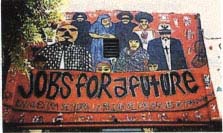
"Jobs For A Future" (JFAF) was started to show the gang members of Pico/Aliso that they were not animals. It was done to show love. It was also done to give the people of Pico/Aliso hope amongst the prevalent despair. Essentially, JFAF is a placement agency and job referral network. It has been placing people in positions at a rate of 250 people per year, and Norma Gillette, the job development supervisor, claims "we’ll go over that number this year" (McHugh). JFAF provides numerous services for these gang members, including counseling, mentoring, and even free tattoo removal. The service does not stop once a job is found, as Father Boyle states; "we do a lot of follow-up, maintaining contact with both employer and employee" (McHugh). Father Boyle believes jobs are the answer because it is the "lack of gainlul employment that creates the idle time for self-destructive behavior to take root" (Martinez). Boyle goes on to say that jobs are a "matter of helping them keep the chaos of their life at bay" (McHugh). The only stipulation he maintains is a strict one - no gangbanging, hanging or slanging. This effectively removes the gang aspect from these kids' lives and gets them started on the right path back to a reintroduction into society.
Actually, Father Boyle does not stop here. Along with finding jobs for these kids, he also creates them. Homeboy Industries, founded in 1992, is an umbrella corporation for a growing number of affiliated works. Homeboy is essentially a storefront for gainful employment. It is composed of six businesses, among them a bakery, silkscreen, professional cleaning services, merchandising branch, printing services and landscaping. In total, there are 40 employees, all former gang members, all coming from different gangs and putting aside past differences to work side by side each other. The great thing about these programs is the enthusiasm with which each one of these new employees, now ex-gang members, has; "Finding people looking for work is never a problem" (Boyle).
Since the creation of Homeboy Industries, there have been several offshoots across the country. One good example is Homeboyz Graphics, headquartered in Milwaukee's predominantly Hispanic South Side. The founder, Brother Jim Golub, created this program from its precursor, Father Boyle's Homeboy Printing. Golub's motto is another simple yet powerful creed; "Nothing stops a bullet like a job" (Nero). He continues on to stress, "People tend to have very low expectations of these inner-city kids. But these people are really bright, and this is the kind of cutting-edge technology that taps into the imagination and can lead to a really good job" (Garza). Amazingly enough, Homeboyz Graphics provides unbelievably desirable jobs in this day and age of the Information Superhighway -- namely web page design. Homeboyz trains young Latino men and women in computer graphics, conflict resolution, public speaking and leadership. They employ just over 40 people and after their training is complete, they assist them in finding jobs in the printing and graphics industries. They have placed 36 former gang members in jobs with salaries that have topped $40,000 a year.
Father Boyle attributes the success of Homeboy Industries and the "Jobs For A Future" program to the people inside of the organization, namely the former gang members. Boyle claims that the only thing a gang member wants is a job. His office is packed daily with kids looking for employment. The reason: jobs give these kids hope. Father Boyle tells about kids who call him the day after getting out of jail or the juvenile penitentiary. These kids have returned to a situation that is relatively unchanged. The same crime, drug-use, poverty, absent family life all still exists. But with a job, they can escape from all of this. "I just want to have a life," they say.
It is important to stress why these jobs have such a tremendous impact on the youths. As mentioned earlier, the biggest success of these programs is that they give kids hope. With all of the gang violence and crime swarming around the worlds of these kids everyday, ft is tough to be able to see where you will be in a year. With a present that is non-compelling, it is virtually impossible for these gang members to imagine a future for themselves. Indeed, they all have no hope for a better life. Therefore, with no alternatives, these kids turn to gangs. They thus live their lives as if there is no tomorrow, showing no fear of inflicting harm or getting out of the way of harm. This is the scenario - a world lull of despair and absolutely no hope. But with the programs Father Boyle is preaching, these kids are given hope. And that makes a huge difference. With jobs, these kids now have a reason and purpose for living. Father Boyle uses the value of work as an antidote to rid their lives of despair and replace the void with hope and dignity.
Finally, any community that wants to have the same success as Father Boyle has had at the Dolores Mission really needs to attack this problem using three strategies -prevention, intervention and enforcement. Fortunately, enforcement is more than taken care of. The federal government has thrown dollar after dollar at this problem, through the use of police programs and other agendas. Prevention, or targeting kids 14 or younger, is now the trendy action to take. The only problem is that these kids will always look up to the older kids in their neighborhood, no matter what means of prevention are undertaken. Therefore, the onus falls on intervention, focusing on kids from the age of 14 to 25.
The federal government and general public are slowly catching on to this notion. In the last presidential election, Bob Dole was quoted as saying, "No amount of federal intervention or redistribution of wealth will change the fact that the success of cities depends on the enterprise and creativity of the people who live in them" (La Ganga). Father Boyle has known this for years. He uses intervention, achieved by giving these kids jobs, to bring these gang members back from what he calls the "darkness" -- the seemingly irresistible rage that leads to so much carnage in so many neighborhoods across America.(Martinez) His persistence and perseverance are to be commended as well. With these kids, a certain allowance for mistakes and slip-ups needs to be in place in order for these programs to be successful, and Boyle understands this. He continually draws on the eternal flame of hope and recognition to keep these kids going and realizes that no one is beyond that chance for redemption. So he gives these kids that chance - over and over again.
Intervention has the most profound effect on this problem than the other two combined, yet the government and general public have yet to fully catch on to this phenomenon. Fortunately, Father Boyle and a few others have, and hopefully in the future, people will learn from this and follow their lead. Brother Jim Golub emphasizes that these
…young people need us. They're not born the monsters society portrays them as. They have human value, imagination and intelligence just like those of use born to lives with clearer, more attractive options. They need to be rebuilt from the inside out, not torn apart further by fear and a lack of compassion. (Nero)
On a broader scale this rebuilding process and salvation should not stop with the inner-city kids but touch all children who are at risk of being swallowed up by the youth gang phenomenon. This is the ultimate goal of Father Boyle. "What if everybody worked for lull employment instead of lull incarceration?" Boyle said. "Jobs for a Future and Homeboy Industries are intervention programs aimed at youth, and I want these programs to be as symbolic as they are actual; I want to send a message to legislators and government officials that we either have to deal with the problem of urban violence or we're going to end up warehousing the consequences" (McHugh).
The Delancey Street Foundation has seen successes similar to those of Father Boyle and his Jobs For A Future. Delancey Street was the brainchild of ex-convict John Maher, an eighth-grade dropout from an Irish slum in the Bronx. Maher borrowed $1000 for the Foundation's start up money from a loan shark. Maher approached Mimi Silbert in 1971 with the hopes of forming a partnership and opening a self~supporting rehabilitation center for drug addicts and ex-convicts. Together they established the Delancey Street Foundation that first opened its doors in late 1971. Although the organization began in San Francisco, its name was borrowed from a street on New York City's Lower East Side that served as home to immigrants from the Old World in search of a new life (Ortiz). As explained by Silbert, "A lot of people came to this country with a dream, and individually they didn't know how to make the dream happen, but collectively they did. They took care of each other. They were like an extended family" (Ortiz). Maher and Silbert founded their organization on these principles.
By 1972, the program's four initial members had grown to over 100, and it had outgrown its current facilities. Through the hard work of the residents, the Foundation soon moved to a larger location in the Pacific Heights neighborhood of San Francisco. Delancey Street thrived in its new location, and Maher and Silbert, who were romantically linked for over 10 years, were active in the city's political and social life (Shuit). Unfortunately, Maher started drinking again in the early- 1 980s and resigned from the organization to undergo treatment. He experienced a series of heart attacks and in 1988 died in his sleep at age 48. After John's passing, Mimi vowed to move the Delancey Street extended family into an even larger building where they could house and rehabilitate more residents.
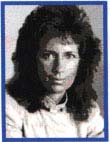
Mimi Silbert holds doctorate degrees in criminology and psychology from the University of California, Berkeley and has always had an interest helping society's underprivileged. It was her work as a correctional treatment specialist at Lorton Prison and Youth Center in Lorton, VA, in the late 1960s that inspired her to want to rehabilitate convicted criminals (Griffin). During her time at Lorton, Mimi became disillusioned by the American prison system. She wondered how a system that failed to both delegate responsibility and teach educational and job skills could transform them into law-abiding, productive citizens. Instead, Mimi has chosen to "...put people in a place where they change their values, do community service, learn to be responsible for themselves and others and have to learn job skills and you (the taxpayer) don't have to pay for it. When they come out, they're likely to be happy, productive, tax-paying citizens" (Griffin).
The Delancey Street Foundation is headquartered in San Francisco, but has satellite operations in Los Angeles; Brewster, New York; Charlotte, North Carolina; and one near Santa Fe, New Mexico. The five residences combine to hold about 2,000 residents at one time, and they have graduated over 12,000 since 1971. Delancey Street, who currently turns away almost 90% of its applicants, has become an incredibly popular alternative to prison. To be accepted, hopefuls must write a letter that shows their commitment to make serious life changes, sucessfully complete an interview with a resident leader, and if currently in prison, get a judge's approval to enter.
The Delancey Street population ranges from ages 18 to 68, and approximately a quarter are women. Ethnically, there is a fairly even distribution; one-third are African American, one-third are Caucasian, and one-third are Hispanic. The average resident has been a hard-core addict for 10 years and has been in prison four times. Upon entering, most residents are illiterate, many have been gang members, and the majority have been trapped in poverty for several generations. Approximately 30% have been homeless prior to coming to Delancey Street, and the other 70% come from the courts, either probated, paroled, or sentenced as an alternative to prison. Since its 1971 opening, there has never been an arrest, despite the criminal backgrounds of the residents. Members of rival gangs harmoniously live in integrated dormitories and work cooperatively side by side.
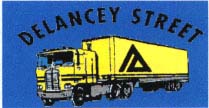
The minimum commitment to the Foundation is two years, but the average stay is four years. During their time in the program, residents learn academic and vocational skills, as well as interpersonal, social survival skills, and the attitudes, values, and sense of responsibility and self-reliance necessary to live legitimately in mainstream society. All residents must complete their high school equivalency and be trained in three different marketable skills that involve physical labor, clerical or computer work, and social interaction before they are eligible for graduation. These skills are developed through work done in Delancey Street's training schools, which also serves as the Foundation's primary income source. Monies are pooled from multiple businesses including a Moving and Trucking operation, a Print and Copy Shop, Retail and Wholesale sales, a Restaurant and Catering Service, Paratransit Services, Christmas Tree Sales, Advertising Specialties Sales, and an Automotive Service Center. Collectively, these businesses generate $10 million annually. Residents also learn how to dress, eat and speck in social settings by attending cultural events such as the opera and the symphony, and are required to wear suits and dresses to dinner. Over 12,000 men and women have graduated into society as taxpaying citizens leading successful lives. Professions of Delancey graduates include lawyers, sales people, various medical professions, sales people, realtors, contractors, and mechanics.
After Maher's death, Silbert vowed to take Delancey Street to the next level; with the help of her San Francisco residents she oversaw the building of a brand new, $14 million headquarters in the city's Embarcadero. At most, only 10 residents had any previous construction experience; the most experienced among them had simply poured the concrete for a handball court at San Quentin prison. But the residents learned and ultimately saved $16 million by doing the construction themselves.
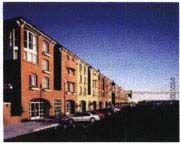
The finished product was a 325,000 square-foot, four-story, 177-unit complex that covers a triangular-shaped block at the corner of Brannan Street and the waterfront (Zane). The Delancey facility resembles a Mediterranean-style villa with all of the amenities--an outdoor swimming pool, a Jacuzzi, a health club, a movie theatre, and a 500-seat banquet room. The ground level is tailored to commercial vendors, with retail stores, a reputable restaurant, and an outdoor espresso cafe (Zane). The top three stories are residential, housing approximately 500 individuals.
But do not let the posh setting mislead you; The Delancey Street Foundation is not simply a hotel for ex-cons, drug abusers and prostitutes. Mimi Silbert and her staff run an incredibly tight ship emphasizing strict self-help lessons teaching responsibility, self-discipline, image counseling, mutual support and education. It is the work of the residents that keeps Delancey Street in business. Each of the five Delancey Street centers are self-sustaining entities.
The Delancey Street Foundation accomplishes all of this at no cost to the taxpayer or the client. There are neither private sector or government social workers nor professional career counselors, consultants, or instructors (Griffm). Mimi prides her organization on the principle that they never have and never will accept any government funds or support a hired staff. The entire foundation is run by Silbert and its residents; no salaries are paid, not even to Mimi. It is a give and receive situation that can be compared to an "extended family" rather than an organization. Delancey Street functions on the "each one teach one" principle where older residents helper newer ones and everyone works. The residents train and manage each other, and veterans pass their knowledge on to newcomers.
The newest residents at Delancey Street start out assigned to the maintenance crew. They are made to dress identically and spend long hours doing manual tasks such as sweeping and mopping courtyards. Only after peer leaders determine that crewmembers are ready, are they relieved from their maintenance duties and allowed to enter one of the business training schools. As Silbert explains:
We don't let you make your own decisions for a long time. After all, a little baby will burn itself if you leave it near the fire, and it will die if you let it cross the street alone. The new people are like my newborns. They are like children: If you give them a choice before they are able to make it responsibly, you leave them with nothing. In this country, especially in the criminal justice system, we've never really looked at parenting enough. Well, here at Delancey Street, we're bringing people up all over agair~ and this time we're doing it right.
The Delancey Street Foundation is well supported by prominent members of the community and legal system. Superior Court Judge Norbert Ehrenfreund, a 24-year veteran on the bench, has wonderful things to say about Delancey Street. He has worked in criminal, family and juvenile court and does not believe that prisons convert drug users -into productive society members. Ehrenfreund believes Delancey Street does. "Prison doesn't stop them from using drugs when they get out," Judge Ehrenfreund reported to Gil Griffin. "Delancey Street changes the directions of people's lives and shows them that they can be responsible for themselves; that they can do a job function. It gives them new mental and spiritual strength."
From the very beginning, Mimi Silbert stressed the importance of a high school education, requiring Delancey Street residents to get their high school equivalencies in -order to graduate from the program. But in 1996, education at Delancey Street was taken to the next level. On March 17, 1996 the San Francisco complex became a satellite -campus of Golden Gate University (Moore). It offered accredited Bachelor of Arts degrees to Delancey residents.
In addition to traditional majors, the program offered a bachelor's degree in a new major, building community, especially for Delancey Street residents. This degree included -courses in practical areas such as real estate development and academic courses such as comparative studies of communities around the world.
There were very specific requirements that individuals had to meet to qualify for the Golden Gate University Program. First, they had to earn their high school equivalencies. They also had to have mastered their "three marketable skills" in Delancey Street's state-accredited vocational education program, and been free of drugs, alcohol, violence and crime for at least four years. The program's inaugural class had 25 members and was mostly composed of former middle school dropouts.
The satellite program was met with many questions. Because of the unique nature of the partnership, it was difficult for the University community to establish a relationship with Delancey teachers, administrators and students (Fulkerth). A cadre of volunteers taught the Delancey Street courses, so there were questions as to whether or not Golden Gate standards were being met. President Stauffer wanted to increase communication and interaction between the two parties, so on April 17, 1997 a meeting was held with Mimi Silbert, GGU Dean Larry Brewster, and Dean of Student Affairs, Mike Miller to address various concerns. They determined that a number of traditional GGU practices would immediately be put into place at the Foundation. They set up a schedule that addressed course evaluations, student registration and admissions, and reviewed instructor credentials and course syllabi. They also established a system of classroom visits, arranged for a University representative to attend Delancey faculty meetings, and chose a Delancey Street faculty member to serve as a liaison with GGU (Fulkerth).
They also discussed the idea of installing a computer at the Delancey Street complex with an InternetiGGUOnline! connection that would encourage communication with the University as well as enable students to access online research, syllabi, and other resources. They also decided to provide Delancey Street students with GGU library cards.
Unfortunately, these efforts did not meet with much success. I recently spoke with Dean of Student Affairs, Michael Miller, and learned that the Golden Gate University program at Delancey Street is currently being phased out. Miller said that it when institutions of higher education have satellite programs, like the program at Delancey Street, accreditation becomes a difficult issue. It was not so much that the courses taught at Delancey were of sub-par quality, but more that the effort needed to monitor accreditation standards was too much for the Delancey staff to handle. Because Delancey Street receives no government funding, their primary means for survival are the revenues brought in by the Foundation's businesses. Therefore, the day-to-day upkeep of these businesses is the most prominent concern of Delancey employees, and the supervision of accreditation standards must take a back seat. "It's one thing to transplant a program into Delancey Street and another for Delancey residents to attend classes at GGU," Miller remarked. He said that the residents who met the appropriate qualifications were welcome to take courses at the GGU main campus, but also pointed out that most would have trouble paying tuition.
In response to the outcome of the Golden Gate University/Delancey Street Foundation program, I suggest either online or videotaped courses as more viable alternatives. By using these mediums, genuine courses taught at the GGU home campus can be used at Delancey Street and accreditation will not be an issue. The videos could be supplemented by Delancey volunteers/tutors who would be familiar with course material and could also serve as a motivating human contact for the residents.
Works Cited
Boyle, Father Greg. "East L.A. Gangs: Jobs for a Future." EDGE Seminar. Stanford, 19 May 1999.
Carmari, John. "What Went Afoul with 'Three Strikes."' San Francisco Chronicle 1 June 1999: Cl.
Cart, Julie. "After the Riots: Rebuilding the Community." Los Angeles Times 16 July 1997: A9.
Garza, Jesse. "Former Gang Members Take Their Skills to the Internet." Milwaukee Journal Sentinel 9 September 1996: News, 3.
Griffin, Gil. "Lives Broken by I)rug Abuse are Made Whole Again at Delaneey Street." San Diego Tribune 21 September 1998: E3.
Fremon, Celeste. Father Greg & the Homeboys. New York: Hyperion, 1995.
Fulkerth, Robert. "Progress Report: BA Program at Delancey Street." (1999): n. pag. Online. Internet. Available: ggu.edu.
La Ganga, Maria. "Campaign '96/Issues - Urban Policy." Los Angeles Times 22 March 1996: AS.
Martinez, Ruben. "Passion Play; Priest Fights to Give Gang Members a Chance for Redemption - as Many Chances as They Need, in Fact." Los Angeles Times 13 August 1995: 3.
McHugh, Martin. "Homeboy Industries." (1999): n. pag. Gnline. Internet. 27 April 1999. Available: companysj.com/vI 61/homeboy.html.
Miller, Michael. Dean of Students, Golden Gate University. Personal Interview. 1 June 1999.
Moore, Teresa. "Getting Degrees at Delancey Street." San Francisco Chronicle 13 March 1996.
Nero, Phil. "Off The Streets." (1999): n. pag. Online. Internet. 27 April 1999. Available: companysj.com/vl 61 .offthestreets.html.
Grtiz, Catalina. "Thousands of Addicts, Felons Find New Life in Delancey St. Foundation." Los Angeles Times l9Marchl99O.
Renwick, Lucille. "Community News: Group Fights to Get Father Boyle Back." Los Angeles 28 February 1993:13.
Silbert, Mimi. "Delancey Street Foundation: A Process of Mutual Restitution." A chapter from the book Seif Help Revolution. Riessman, Frank Ph.D. and Alan Cartner Ph.D., eds. New York: Human Sciences Press, Inc., 1984.
"Southern California Voices I A Forum for Community Issues." Los Angeles Times 3 June 1995:B7.
Shuit, Douglas P. "Delancey Street Rehab Center to Open in L.A." Los Angeles Times 20 May 1993.
Wakelee-Lynch, Joe. "Father Greg's Risky Neighborhood." The Washington Post 22 August 1995: Cl.
Wilentz, Amy. "Mimi's Mission." San Francisco Examiner Magazine 20 October 1996.